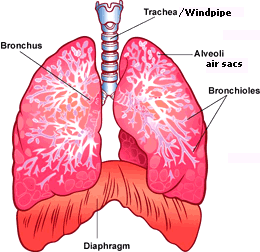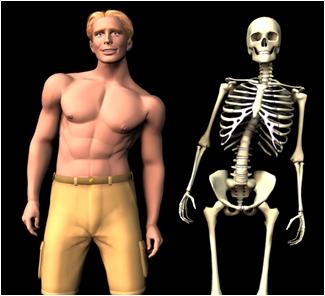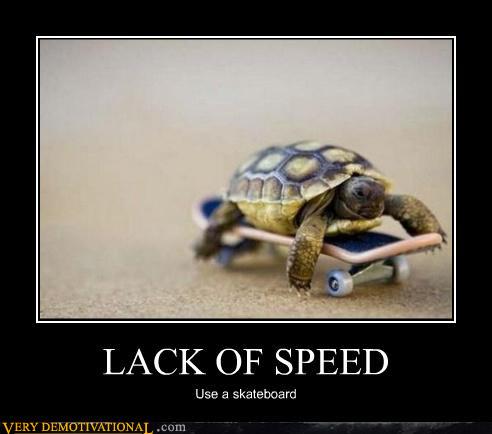How to Freak Out New Trainers
I was teaching a course on Fitness Assessment in Calgary last Friday, and as a portion of the course we went through some basic and advanced concepts in postural assessments. These are commonly straight forward, shoulder elevated here, pelvic tilt there, sixth toe. Wait, what???
One girl had some issues with her torso. She was leaning to her right side while standing on her left leg. And I mean really leaning. Through her torso she had an obvious bend that could be considered non-scoliotic, as there was only one direction of bend with no rotation. Rather than give her the same bullshit like her abdomen was tight or her shoulder was rolled forward because of blah blah blibbidty blah, I cut to the chase and got to the heart of the matter, so to speak, and I told her that her left lung wasn’t working properly.
Oh I’m sorry, did I just drop some knowledge on you?? Here, let me pick that up. There we go. Everything’s back to normal now. And yet…..your world will never be the same.
Yes, the left lung wasn’t working properly. Now before I go into pulmonary physiology mode and start putting everyone to sleep, let’s look at how this may actually happen in a way that might actually be interesting and possibly change the way you view the body.
The lungs are supported by the ribs on the outside, the diaphragm from beneath, and the scalenes from above, with the ribs moving and stabilizing through the work of the intercostal muscles all around and up and down the rib cage. To top it all off, we have the superficial muscles like the pecs, latisimus, abz, and traps playing a role, as well as the position of the T-spine itself, which can limit lung volume by holding a kyphotic position or bending one way or the other preferentially. When you breathe in and out, the diaphragm and scalenes work together with the intercotal muscles to raise and expand the ribs, and increase the interthoracic volume, and expand the volume of the lungs to pull in air.
As such, there are three distinct zones that you can breathe from: the diaphragm, the intercostals (comprising the entire musculature of the ribs), and the scalenes. Additionally, you can breathe through your left lung or your right lung preferentially. As there are a lot of moving parts, there’s a good chance something will go wrong and make breathing somewhat dysfunctional, just as a hip dysfunction can impede the mobility of the knee, etc.
The left and right lung are not symmetrical, due to the positioning of the heart and liver. The right lung, by volume is commonly bigger than the left, and the left is easier to compress with postural variance as well as preferential movements along the dominant hand.
 So how the hell can this relate to posture you’re asking? Well, a common postural deviation is to lean to one side and arch through the ribs. This position expands the volume of one side of the lung making breathing easier through muscle activity, and compresses the other side, making it harder to breathe into that side due to the compressed volume and reduced mobility of the inspirational muscles. If the T-spine is rigid and not able to extend or rotate properly, the intercotals will not be able to contribute, which means the good ol’ diaphragm has to pick up the slack. However, if the torso is rotated or tilted, that will mean some of the intercostals will work, but only on the stretched out side.
So how the hell can this relate to posture you’re asking? Well, a common postural deviation is to lean to one side and arch through the ribs. This position expands the volume of one side of the lung making breathing easier through muscle activity, and compresses the other side, making it harder to breathe into that side due to the compressed volume and reduced mobility of the inspirational muscles. If the T-spine is rigid and not able to extend or rotate properly, the intercotals will not be able to contribute, which means the good ol’ diaphragm has to pick up the slack. However, if the torso is rotated or tilted, that will mean some of the intercostals will work, but only on the stretched out side.
 So as you can see from the picture above, if your lung isn’t functioning well, or rather if the muscles of inspiration on one side aren’t pulling air into the lung to expand it and square your posture like the other side, you can wind up developing a postural issue JUST FROM BREATHING POORLY!!!
So as you can see from the picture above, if your lung isn’t functioning well, or rather if the muscles of inspiration on one side aren’t pulling air into the lung to expand it and square your posture like the other side, you can wind up developing a postural issue JUST FROM BREATHING POORLY!!!
So how can you tell if you have a breathing issue? First, check yourself out in the mirror with your shirt off (behave!!) and see if you lean hard to one side or the other. Then, watch how you breathe, and what parts of your torso expand to allow more air in. Ideally, you should elevate and expand your ribs, and extend your abdomen to accommodate your diaphragm, and do so equally on both sides. If your abs and diaphragm are stiff, you’ll only expand the bottom and middle of your ribs with no elevation. This is an elite endurance athlete client breathing before and after training with me which shows rib breathing. Notice how she doesn’t breathe through her diaphragm in the pre- video, and then she has some mobility through her diaphragm at the post- video:
Consequently, when she ran she would develop side stitches on her right side pretty quickly into her run, and then they would dissipate after about 15 miles (I told you, endurance athletes are insane). After getting her breathing down, she wound up not having any side stitches unless she forgot how to breathe.
If one side is being stretched and one side is being tightened, you can still fix it. Lay on your stretched side down, put a hand on your shortened side ribs, and try to breathe in through just that side of your lungs. I know it sound crazy, but trust me, it works. You should feel your hand move as your lung inflates and pushes your ribs out. Do this for a good 5 minutes, then check it in the mirror again. If you look taller and more in line, congratulations because you’ve identified the problem!!!
I know you’re probably thinking this doesn’t apply to you, but I’m sure you can tell me that kyphosis isn’t an issue to the lungs either. Sure, standing all flexed over and torqued won’t impact how you breathe at all, nor will having aberrant breathing mechanics affect your posture. I also live in a warm climate and have millions of dollars in the bank. Oh, and I can shoot laser beams from my eyelids, which makes me a treasure for the armed forces, as they are studying me to see if they can clone my genetic awesomeness to use in warfare. Take that, Al Quaeda!! Bet you never thought laser vision would bring you down!!
The point of this post wasn’t to show how uber-cool breathing mechanics are, but to show that there is usually more to a problem than meets the eye, and expanding our focus to include all variables is sometimes needed to really see the problem instead of narrowing to find the most probable component that we want to look for. This could be a reasonable explanation why you run out of gas when doing some intense cardio-based work or hard circuits that require a lot of wind. If you’re not using all three zones of breathing, you’ll wind up limiting your potential, speed, and ability to land chicks galore with your concentrated awesomeness.
 Now for those of you who looked through this entire post and have taken a few nuggets of wisdom away from it to use on your own, I commend you. And for those who just read it and don’t care, and feel they’ve been somehow cheated out of a great experience, I present to you Inez Sainz bum.
Now for those of you who looked through this entire post and have taken a few nuggets of wisdom away from it to use on your own, I commend you. And for those who just read it and don’t care, and feel they’ve been somehow cheated out of a great experience, I present to you Inez Sainz bum.

3 Responses to How to Freak Out New Trainers